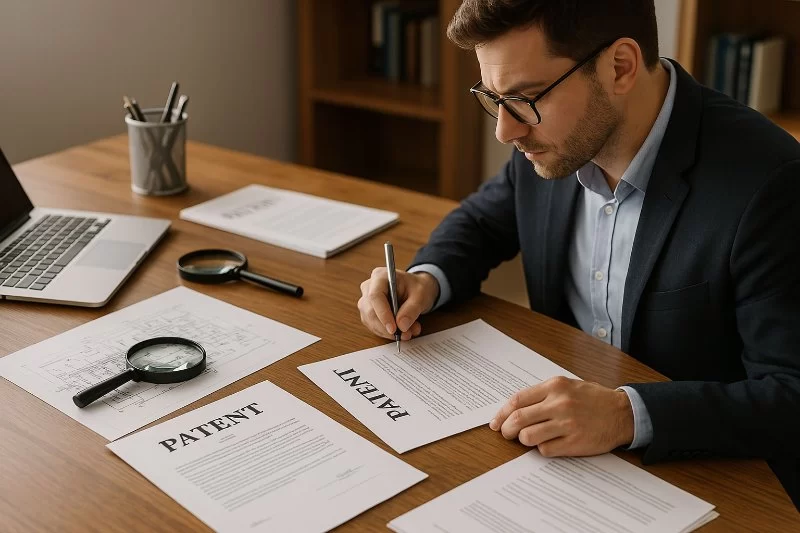- understanding-the-need-for-legal-protection - Understanding the Need for Legal Protection
- types-of-intellectual-property-protection - Types of Intellectual Property Protection
- how-to-protect-your-invention-legally-step-by-step - How to Protect Your Invention Legally: Step by Step
- real-world-case-a-missed-patent-opportunity - Real-World Case: A Missed Patent Opportunity
- working-with-professionals-to-secure-your-rights - Working with Professionals to Secure Your Rights
1. Understanding the Need for Legal Protection
In today’s competitive and fast-paced innovation economy, having a great idea isn't enough—you must also ensure that idea is protected. If you’re wondering how to protect your invention legally, you're already thinking in the right direction. Without proper legal safeguards, even the most groundbreaking invention can be copied, monetized by others, or lost entirely.
Legal protection gives inventors exclusive rights to their creations, allowing them to commercialize, license, or enforce ownership through legal channels. This doesn't just prevent theft—it builds long-term value and credibility around your invention.
2. Types of Intellectual Property Protection
2.1 Patents
Patents are perhaps the most well-known form of invention protection. They provide inventors with the legal right to exclude others from making, using, or selling their invention for a set period (usually 20 years for utility patents). However, patents come with strict requirements—your invention must be new, useful, and non-obvious.
2.2 Trademarks
Though trademarks typically apply to logos and brand names, they can also be crucial if your invention includes a recognizable name or brand identity. Trademarks ensure that others cannot use similar marks that might confuse customers.
2.3 Copyrights
If your invention includes written material, illustrations, or source code (common in software inventions), you may need copyright protection. While it doesn't cover the idea itself, it does protect the original expression of that idea.
2.4 Trade Secrets
Some inventions or processes may be better kept secret than patented. In that case, keeping your formula or method as a trade secret can protect it indefinitely—as long as it remains confidential. Think Coca-Cola’s recipe or Google's ranking algorithm.
3. How to Protect Your Invention Legally: Step by Step
3.1 Document Your Idea
Start by keeping a detailed and dated log of your invention process, including sketches, descriptions, improvements, and tests. This will be useful evidence if your rights are ever challenged.
3.2 Conduct a Prior Art Search
Before spending money on legal filings, do your homework. Check if your invention has already been patented or published. You can search databases like USPTO or WIPO, or hire a professional search firm.
3.3 File for a Provisional Patent
If your idea is still evolving, filing a provisional patent application in the U.S. can secure a filing date and give you 12 months to file a full patent. This is a powerful way to get “patent pending” status while refining your invention.
3.4 Draft and File a Patent Application
This step should ideally be done with a registered patent attorney. The application must include claims that define the invention's scope, technical drawings, and a thorough description. Precision is critical—vague language or missed claims could jeopardize your rights.
3.5 Protect Other Related Rights
Register any logos or names under trademark law, and file for copyright if you have user manuals, diagrams, or software code that accompanies the invention.
4. Real-World Case: A Missed Patent Opportunity
One of the most cited stories in the world of IP law is that of Martin Cooper, a freelance inventor who created an innovative toy mechanism in the early 90s. He showcased it at a toy convention without filing any protection. A large company replicated the design months later and released it worldwide under a new brand.
Martin sued—but without prior filing or documentation, the court sided with the corporation. It's a harsh reminder that knowing how to protect your invention legally is just as important as the invention itself. Always secure your legal position before you go public.
5. Working with Professionals to Secure Your Rights
5.1 Why You Shouldn’t DIY Patent Applications
Many inventors are tempted to write their own patent applications, especially to save on legal fees. But a poorly written application can be worse than none at all. Patent language is technical, procedural, and unforgiving. A single misstep can cost you your invention.
5.2 Finding the Right Legal Partner
When looking for professional guidance, experience matters. A good IP attorney will walk you through the best legal strategy—whether that’s a patent, a trade secret, or a combination. We highly recommend visiting Fred Miller Lawyer to find trusted legal support tailored specifically for inventors. With personalized advice and years of experience, Fred Miller can help you protect your invention from idea to market launch.
5.3 Keep Innovating, Keep Protecting
Legal protection is not a one-time event. As your invention evolves, so should your protection strategy. Add new patent claims, register additional trademarks, and update your IP filings regularly to stay ahead.


 law offices of gary j kim
law offices of gary j kim kevin conway esq
kevin conway esq pendas law firm orlando fl
pendas law firm orlando fl murat berdyev
murat berdyev flickinger and sutterfield
flickinger and sutterfield mark gallagher attorney
mark gallagher attorney